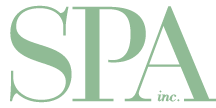In the spa industry, hiring the right employee always benefits owners By Brooke SmithFor employers, hiring a qualified employee can…
Pushing the boundaries
I recently heard about a day spa owner planning to put a new $95,000 laser treatment machine into service mere days after a brief training program and taking delivery of it. Shaken by the obvious perils of inexperienced technicians zapping spa guests with advanced targeted devices, and having written and spoken extensively on risk management within the spa industry, I decided to take another look into how new technology might be affecting the whole area of risk management.
As a whole, the customer journey is complex – the synergy of fixed and moving parts includes the physical location, the treatment and product lineup, the qualifications, training, presence of mind and commitment of staff, the advertising and market program, and the customer’s state of health and expectations. In today’s booming medi spa sector, employing inadequately trained and inexperienced technicians can result in a particularly volatile concoction. One faulty aspect can cause untold damage.
According to the American Med Spa Association 2017 State of the Medical Spa Industry Report, despite a growing overlap between regular spas and medical spas in terms of customer service and marketing, “medical spas have a vastly different price point, more advanced technologies, and unique legal and regulatory challenges. [The medical spa industry] by itself generates $4 billion in revenue a year, has doubled in size in the past five years and is projected to double again by 2020.”
The Wild West mentality that often accompanies economic booms is exemplified by the soaring popularity of cosmetic laser treatments. In the right hands they can produce amazing results for hair removal, skin tightening, wrinkle reduction and other applications. But their ready availability has lulled many clients and patients into thinking they’re as safe and pain-free as advertised. A woman in Guelph, Ontario, for example, who wanted to try laser skin tightening after having two children, visited a clinic advertising certified laser technicians and risk-free treatments with reportedly no side effects. Instead, as reported on CTV’s investigative news program W5, her abdomen was left covered in unsightly rectangular blistering burns. The W5 report incorporated a Canadian Dermatology Association (CDA) survey that found 73 per cent of dermatologists have treated patients for burns, scars or other wounds sustained after seeking laser treatments. Dr. Lisa Kellett, a Toronto dermatologist with 20 years experience, treats several patients a week suffering severe complications from burns, pigment change, infections and scarring from poorly trained practitioners. The CDA told W5 it will be advocating for new legal guidelines to help reduce the number and severity of patients’ injuries caused by these very powerful machines.
What I am seeing is spa owners investing in energy devices like lasers in the hope of capturing a piece of that $4 billion pie. With blurred lines between who is qualified and who isn’t, laser treatments remain one of the most unregulated medical procedures in Canada. Note that the spa industry in general is enjoying healthy gains, with U.S. spa visits alone surpassing 180 million last year (representing an annual increase of 2.5 per cent), and revenues rising to a record $16.8 billion, up 3.1 per cent. But risks remain. You may be familiar with the case of the Winnipeg woman who developed a life-threatening infection after getting a pedicure, just before she was supposed to leave on a dream vacation to Europe with her sons. Paramedics had to transport her directly from the Toronto airport to hospital moments before boarding.
Or the even more chilling incident in 2015 of the 24-year-old Las Vegas spa worker who, one night after hours, died from asphyxia caused by low oxygen levels in a cryotherapy chamber incorporating liquid nitrogen.
I haven’t even touched on lawsuits arising from inappropriate touching – like the case in September 2017 where a therapist in Washington, DC, made significant sexual advances without consent towards a client. The therapist apologized and claimed not to know what prompted his behaviour, but the damage was done.
There are almost too many other risks to outline here. Each could (and perhaps will) be the subject of its own future story. But a short list includes:
- Financial: Fraud, cybercrimes, scams, embezzlement, internal and external theft, personal use of business resources.
- Inventory Loss: Internal and external.
- Insurance: Inadequate or non-compliant.
- Human Resources: A huge area of risk exposure in this labour-intensive industry, this includes flawed hiring practices such as falsified identity, qualifications and references.
- Facility: Violation of building code requirements, safety hazards, fire, flood, sewer backup, etc.
- Outsourcing: An example of risk would be of an unlicensed food handler carrying hepatitis.
- Infection Control: Improper level of infection control procedures for levels of risks.
- Equipment: Improper maintenance, service and calibration, inaccurate records, lack of protection against radiation, etc.
- Emergencies: Slips and falls, fire, earthquake, flood, power outages, etc.
- Product: Problems caused by lack of proper technical training, compliance to procedures, product modifications, cross-contamination of products, etc.
- Treatments and Services: Lacking proper training and/or patient/client screening, hair removal services causing burning etc., manicure/pedicure/hydrotherapy infections, adverse reactions, misuse of products, misleading or miscommunicated client benefits. Lots can go wrong, but please don’t let me in any way deter you from the many fabulous reasons to get into the spa business or expand the business you’re already running. Understanding your market, following proper guidelines for hygiene and cleanliness, hiring the right people and using your business acumen and common sense can keep you out of trouble – while paying big dividends, both emotional and financial. Just do your homework and know the risks. And if you are not sure, seek professional guidance.




